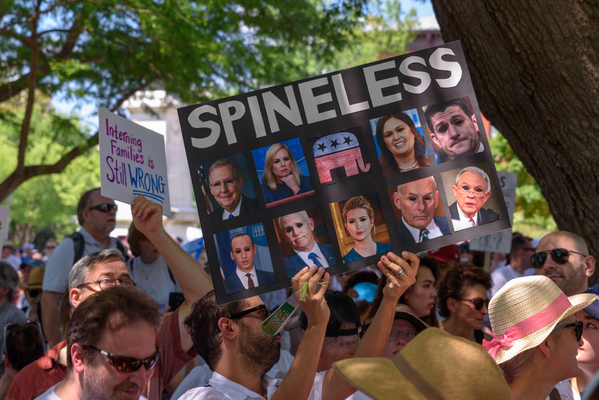American politics has been dirty for a long time, but today's political climate seems especially toxic. Turns out, there's a reason for that: centralization of power.
As Scott Rasmussen explains in the excellent analysis below, our political system is way out of sync with what the American people want from their government.
This ongoing dissatisfaction and desire for change reflects a fundamental rejection of both political parties. Republicans and Democrats are both capable of tapping into discontent when the other team is in power. However, neither party has figured out how to deliver meaningful accomplishments when given the chance to exercise power.
Why is this happening? Why hasn't either party figured out a governing philosophy that can appeal to voters?
Most likely, it's because neither party has come to grips with the digital revolution. Oh, sure, they have social media consultants for campaigns and send all kinds of carefully targeted online messages to their base. But they are still envisioning a political order that existed before Apple and Microsoft changed the world.
From colonial days up until the 1970s, everything in America got bigger, more centralized and more homogenized. Three television networks controlled 94 percent of the prime-time audience. The political system followed suit and developed a bigger central government.
In that pre-digital world, official Washington dreamt of a top-down government in which very smart people made the rules for the rest of us to live by. The two parties competed by trying to convince voters that their team would make the best rules.
But, the new technologies of the 1970s launched a great turnaround, and society began to decentralize. Rather than just three television networks, we could choose from countless cable channels, and later the internet. Things really took off with the creation of the smartphone, one of the most revolutionary pieces of technology ever developed.
While society was decentralizing, the political system continued to march in the opposite direction. Political power is more centralized than ever, and a vast regulatory state has emerged. The disconnect between a decentralizing society and a centralizing political system is the underlying tension creating our toxic political environment today.
Just like in the 1970s, both Republicans and Democrats in official Washington still talk in terms of a one-size-fits-all governing solution. They think voters are looking to them to make the decisions that will determine the fate of the nation.
But this is the 21st century, and we have access to more information in our smartphones today than the president had in the '70s. Voters aren't looking for one team or the other to make the key decisions for us. Instead, we want to make more of those decisions for ourselves.
Rasmussen is right: we want to make more decisions for ourselves. That's why millions have joined the Article V Convention of States movement.
A Convention of States can enshrine in the Constitution the decentralization the American people desire -- and the limited federal government the Founders intended.
These amendments can shrink or, in some cases, eliminate the bureaucratic state, limit Congress's jurisdiction (say goodbye, Obamacare), and return that decision-making power to the states and the people.
Sign the Convention of States Petition below to bring power home!


